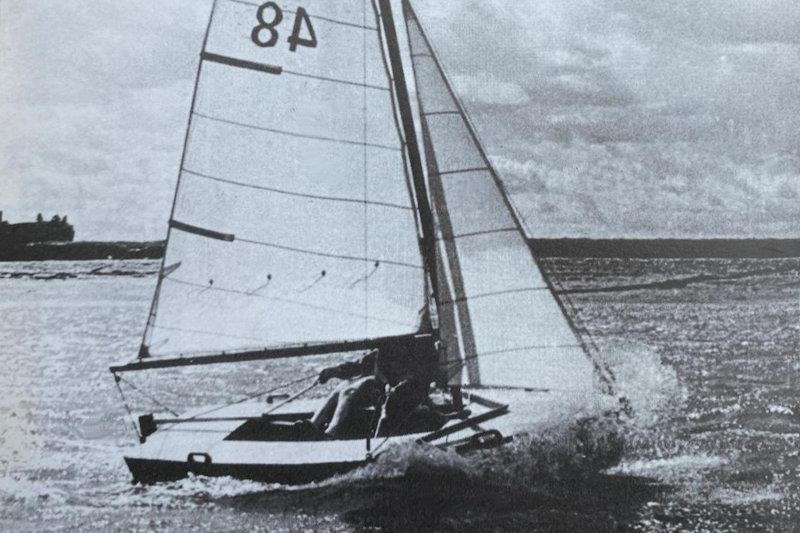
The Cadet class dinghy's rivals from the 1950s onwards - some history and statistics
by Magnus Smith 1 Sep 23:59 BST

Cadet Week at Burnham in the 1950s © Yachting World
When Jack Holt designed the Yachting World Cadet in 1947, it was the only double-handed dinghy for kids to sail that couldn't fit adults on board, and didn't permit adults to race. The class occupied this niche until the RS Feva appeared in 2002.
This (slightly nerdy) article looks at the other youth classes which existed in the 50s to the 90s, and then, what happened to the number of sailors in each class across the last 20 years.
History lesson
The Optimist only arrived in the UK twelve years after the Cadet. Whilst kids could sail in a Mirror/Graduate/Heron/Firefly/N12/Gull it was only with an adult alongside you, in a fleet against adults. To sail a Streaker/Europe/420 you had to be heavier (i.e. older). So there was no other class for the very youngest of sailors to race with their peers. Whilst there was a kids contingent in the British Moth a long time ago, again this was within an adult fleet.
No wonder the Cadet was popular, and grew into a massive nationwide fleet from the 1940s to the 90s! The map to the right shows how many clubs had Cadet fleets.
Naturally there was movement away into the new classes; first the Optimist, then the Topper in 1977, though the first true rival (double-handed, no-adults) was the RS Feva in 2002.
So the Cadet had a great run, and could then be consigned to the dustbin with its symmetric spinnaker and slow speed? Apparently not! The much-maligned speed of the Solo doesn't seem to have killed that class (over 90 boats at the Nationals in recent years) and the Scorpion still has a symmetric kite (60-70 boats at the Nationals).
Whilst there was recently an eight year period where the average entry mark was 46 boats at the Cadet Nationals, things were never any lower than that, and now the 2024 event and the 2025 event have proved to be bumper years.
Digging into the statistics
Looking through the last 25 years of National Championship attendance figures in the YachtsandYachting.com database, we can compare the classes which allow only under 18 year olds to compete. The Optimist has reigned supreme over all, since the turn of the millennium. It seems single-handers can really pull in the numbers.
In terms of boat numbers at a UK Championships the Topper has sat firmly in second place all this time, though if you count how many sailors attended an event, the Cadet and Feva were occasionally ahead.
The 420 has has a disadvantage in this statistical analysis, because you cannot crew at age 7-12 like in the Cadet and Feva. It may be harder to build up the same number of boats/sailors.
The 29er could perhaps have been included here, despite not limiting sailors to be under 18. It is clear many 420, Feva and Cadet sailors will graduate to the 29er. Again, there are unlikely to be be many 7-12 year olds in that fleet!
There are two graphs because you may wish to compare the number of boats attending (above), or see the number of sailors who attended (i.e. numbers for doublehanded boats are multiplied by two in the graph below).
The graphs show how the rise of the Feva caused a dip in the Cadet numbers initially, but now it seems we might be seeing the Feva numbers stabilising around the 100 mark, and the Cadet slowly increasing again!
There was a spike in the Cadet graph for 2024, which we have to discount somewhat, because the Worlds were held in Plymouth just after the UK Nationals. (The 2022 RS Feva World Championship at Weymouth did not cause a spike because their Nationals were more than a month earlier.)
The year 2020 is removed as nobody held a UK Nationals during lockdown.